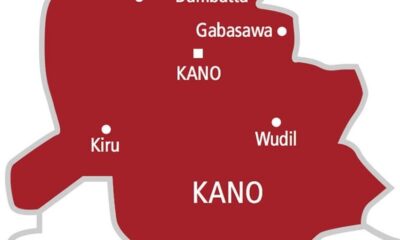EDITORIAL
Innovative Ways to Start a Business During Economic Stagnation

Starting a business is never easy, especially during tough economic times. But challenges can also create opportunities; knowing how to recognize economic stagnation is the first step in finding innovative ways to launch a business.
What is Economy Stagnation?
Economy refers to the system by which goods and services are produced, distributed, and consumed in a society or country. It involves all activities related to the production, trade, and consumption of goods and services, including the labor, capital, and resources that are used. The economy can be measured by various indicators, such as Gross Domestic Product (GDP), unemployment rates, inflation, and more.
Stagnation refers to a period of little or no economic growth. During stagnation, there is minimal or no increase in GDP, low levels of job creation, and often stagnant or declining consumer spending. Unlike a recession, where the economy contracts or shrinks, stagnation means the economy is not growing, but it isn’t necessarily shrinking either. It’s a state of economic inactivity or slow progress, often leading to prolonged periods of unemployment and lower consumer and business confidence.
Economic stagnation happens when a country’s economy stops growing. There’s little to no growth in GDP, job creation slows down, and consumer spending drops. Unlike a recession, where the economy shrinks, stagnation is more like being stuck in neutral. It’s a period where businesses struggle, and people are more cautious with their money. Recognizing economic stagnation early can help you adapt and find ways to start a business that can thrive in this environment.
How to Recognize Economic Stagnation
Recognizing economic stagnation involves watching for several key signs. First, look at the job market. If unemployment is high or job creation has stalled, it’s a strong indicator. Secondly, pay attention to consumer spending. Are people spending less, even on essentials? Finally, observe overall business activity. Are companies cutting back on investments or new projects? These are all signs that the economy is stagnating.
Innovative Business Ideas During Economic Stagnation
When economic stagnation hits, many see it as a time to wait and see. But for entrepreneurs, it can be a time to innovate. Here are some ways to start a business during economic stagnation:
1. Focus on Providing Essential Services
During economic stagnation, people prioritize needs over wants. Starting a business that offers essential services can be a smart move. Think about industries like healthcare, food, and home repair. These services remain in demand, even when people are cutting back elsewhere. Recognizing economic stagnation can help you tailor your offerings to meet these essential needs.
2. Offer Affordable Alternatives
In tough times, consumers look for ways to save money. You can build a business around offering cheaper alternatives to expensive products or services. For example, you could start a business that sells refurbished electronics or offers low-cost home cleaning services. By providing value for less, you’ll attract budget-conscious customers.
3. Embrace the Digital Platform
Economic stagnation often forces businesses to rethink their strategies. Many turn to online platforms to reach customers and cut costs. Starting an e-commerce store or offering digital services can be a low-cost way to enter the market. The overhead is lower, and you can reach a wider audience. Recognizing economic stagnation early can push you to explore digital opportunities before others catch on.
4. Solve New Problems
Every economic challenge creates new problems that need solutions. For instance, economic stagnation may lead to increased demand for financial planning services, job retraining, or mental health support. By identifying these emerging needs, you can create a business that addresses them directly.
5. Collaborate to Cut Costs
Collaboration is key during economic stagnation. By partnering with other small businesses, you can share resources, reduce costs, and expand your reach. Whether it’s sharing office space or co-marketing, collaboration helps you survive and grow when times are tough.
6. Leverage Government Programs
During economic stagnation, governments often roll out support programs to stimulate business growth. These might include grants, low-interest loans, or tax incentives. Stay informed about these opportunities, and take advantage of them to reduce your startup costs.
7. Start Small and Scale Gradually
Economic stagnation means you have to be cautious with your investments. Start with a small-scale version of your business idea. Test the market and gather feedback. Once you have proof of concept, you can gradually scale up. This approach minimizes risk and allows you to adapt as needed.
Economic stagnation is a challenging environment for starting a business. However, by recognizing it early and adapting your strategies, you can find innovative ways to succeed. Focus on essential services, offer affordable alternatives, and embrace digital tools. Solve new problems, collaborate, and leverage available resources. By doing so, you can turn economic stagnation into a springboard for your business success.
Discover more from Asiwaju Media
Subscribe to get the latest posts sent to your email.
-

 NEWS3 days ago
NEWS3 days agoDavid Beckham Hospitalized With Arm Injury As Victoria Shares Update
-

 ENTERTAINMENT2 days ago
ENTERTAINMENT2 days agoFrank Edoho Confirms Split From Second Wife Sandra Onyenuchenuya
-

 NEWS2 days ago
NEWS2 days agoMan Heartbroken As Girlfriend Of 2 Years Denies Him During Interview With YouTuber Asherkine At UNN
-

 CAMPUS REPORTS5 days ago
CAMPUS REPORTS5 days agoAE-FUNAI to Unbundle Mass Comm Programme into Eight New Disciplines – VC
-

 SPORTS5 days ago
SPORTS5 days agoVictor Osimhen Acquires 2025 Rolls-Royce Cullinan Worth Over ₦900 Million
-

 ENTERTAINMENT2 days ago
ENTERTAINMENT2 days agoNollywood Mourns As Actor And Producer Kayode Peters Reportedly Passes Away In Canada
-

 SPORTS3 days ago
SPORTS3 days agoAbakaliki FC Faces Kwara United Today in Federation Cup Final
-

 JOBS/SCHOLARSHIPS4 days ago
JOBS/SCHOLARSHIPS4 days agoFG Releases YEIDEP 2025 Payment Schedule, Sparks Hope for Youth in Agribusiness
-

 INSIDE NYSC5 days ago
INSIDE NYSC5 days agoNYSC Officer Clarifies Allowance Payments, Warns Corps Members on BVN Errors
-

 INSIDE NYSC3 days ago
INSIDE NYSC3 days agoNYSC DG Calls For Unity and National Development During Lagos Camp Visit
-

 ENTERTAINMENT6 days ago
ENTERTAINMENT6 days agoTems Gifts Fan ₦3 Million For Stunning Crochet Portrait
-

 ENTERTAINMENT2 days ago
ENTERTAINMENT2 days agoUNN Student Becky Breaks Silence, Denies Claims Of Boyfriend Denial After Viral Outing With Asherkine

























